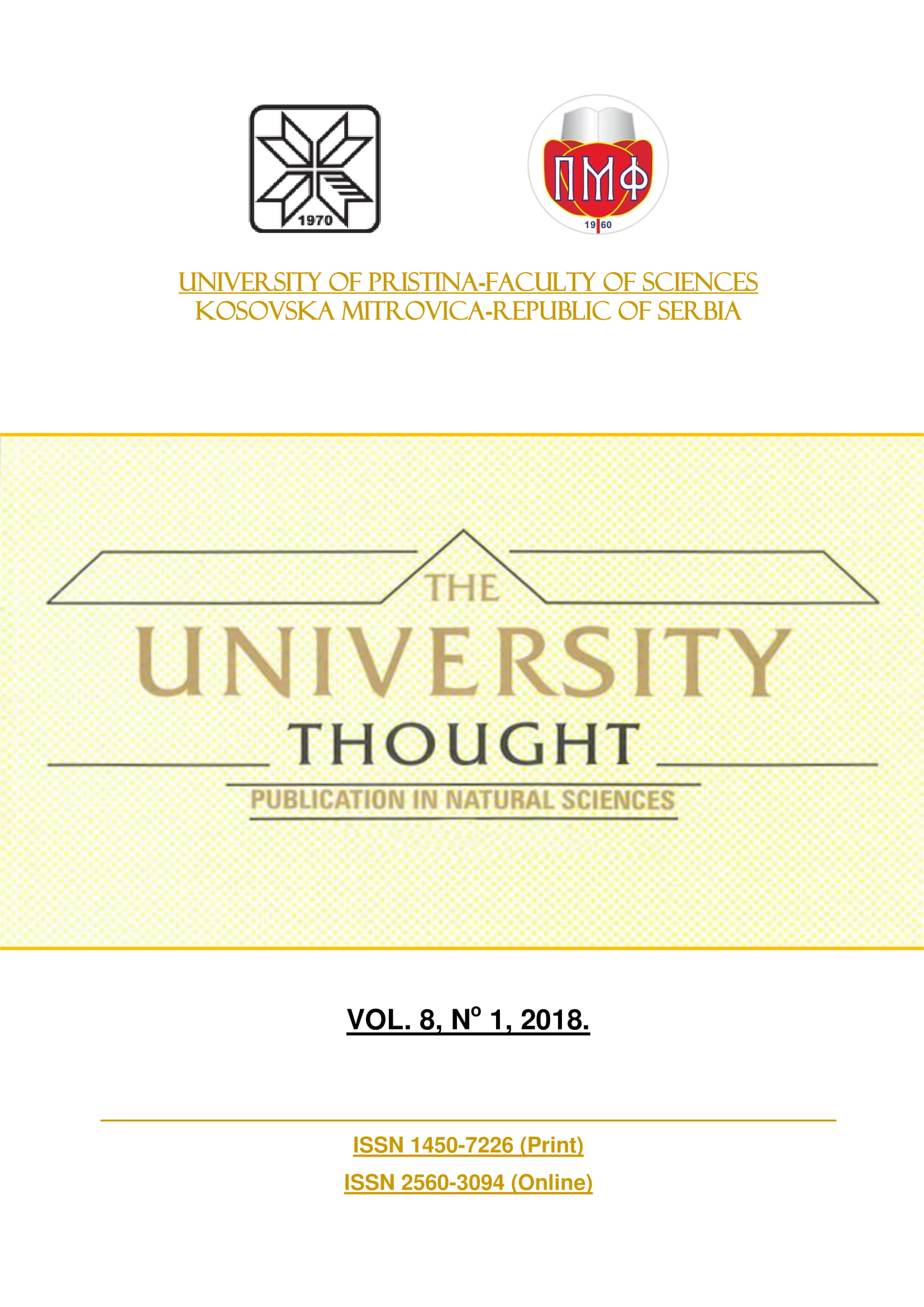STATISTICAL ANALYSIS OF THE PRODUCTION OF BLUESTONE FROM GRANULATES (ELEMENTARY COPPER) BY OXIDATION WITH HYDROGEN PEROXIDE MIXED WITH STOCK SOLUTION OF BLUESTONE AND SULFURIC ACID
Abstract
The technological process for the production of bluestone consists of three phases: the melting of waste copper in stationary flame furnaces, the granulate dissolution with sulfuric acid in the presence of the stock solvent of copper sulphate and hydrogen peroxide, and the crystallization of copper sulphate from a saturated blue stone solution in natural baths for crystallization. This paper describes the production of bluestone using hydrogen peroxide as an oxidation agent in a mixture of sulfuric acid and a stock solution of copper sulphate as well as the statistical description and graphic representation of the dissipation of copper Cu in (%), lead Pb in (%) and nickel Ni in (%) in the production of copper sulphate. On the basis of the statistical analysis, the value of copper Cu in (%) ranged from 70.3 to 99.78%, with an arithmetic mean of 91.88800%, which shows that the value of copper only in point 4 was below 80%.
References
Chen, H., Zheng, X., Chen, Y., Li, M., Liu, K., & Li, X. 2014. Influence of Copper Nanoparticles on the Physical-Chemical Properties of Activated Sludge. PLoS One, 9(3), p. 92871. doi:10.1371/journal.pone.0092871
Dibina, P.V. 1962. Tehnologija mineralnih solej.Goshimizdat, pp. 448-471.
Gavriluta, A., Fix, T., Nonat, A., Slaoui, A., Guillemoles, J., & Charbonnière, L.J. 2017. Tuning the chemical properties of europium complexes as downshifting agents for copper indium gallium selenide solar cells. Journal of Materials Chemistry A, 5(27), pp. 14031-14040. doi:10.1039/c7ta02892j
Hu, S., Wu, Y., Yi, N., Zhang, S., Zhang, Y., & Xin, X. 2017. Chemical properties of dissolved organic matter derived from sugarcane rind and the impacts on copper adsorption onto red soil. Environmental Science and Pollution Research, 24(27), pp. 21750-21760. doi:10.1007/s11356-017-9834-3
Jovanović, L.J.S., & Jovanović, S.M. 1970. Osnovi kvalitativne hemijske analize.Beograd: Naučna knjiga.
Kaluđerović-Radoičić, T., Radović, I., Ivanović, M., Rajić, N., & Grbavčić, Ž. 2015. Proračun i optimizacija procesa proizvodnje bakar(II)-sulfat-monohidrata iz bakar(II)-sulfat-pentahidrata u sušnicama sa fluidizovanim slojem. Hemijska industrija, . Vol. 69, Issue 3, pp. 275-286.
Kirk-Othner, 1965. Encyclopedia of Chemical Tecnology. Sec.ed. vol. 6, pp. 276-278.
Meng, D., Chen, H., & Xue, G. 2016. Interaction effects of typical PPCPs and copper nanoparticles on physical-chemical properties. Huagong Xuebao/CIESC Journal, . Vol. 67, Issue 10, pp. 4455-4460.
Ulmanns enciklopedie der technishen Chemie 1960. Aufl 11 Band. 3. pp. 246-250.
Vlček, V., & Pohanka, M. 2018. Adsorption of Copper in Soil and its Dependence on Physical and Chemical Properties. Acta Universitatis Agriculturae et Silviculturae Mendelianae Brunensis, 66(1), pp. 219-224. doi:10.11118/actaun201866010219
Vssermanm, I.M. 1962. Proizvodstvo mineraljnih soli.Gshimizdat, pp. 132-189.
Zuev, K.V., Perevalov, V.P., Vinokurov, E.G., Zhigunov, F.N., & Koldaeva, T.Y. 2016. Physical-Chemical Properties of Modified Copper-Phthalocyanine and Its Aqueous Dispersions. Macroheterocycles, 9(3), pp. 250-256. doi:10.6060/mhc160212z
Authors retain copyright and grant the journal right of first publication with the work simultaneously licensed under a Creative Commons Attribution License that allows others to share the work with an acknowledgement of the work's authorship and initial publication in this journal.

